Introduction
- Medicine is an ever-evolving Science and what we learn here is that we are now changing our views on germs; towards the ever-increasing importance of seeing ourselves as being part of a Global Ecosystem.
- On the skin, there are around 100000 bacteria for every cm2 and the type of bacteria and density varies according to the local environment: from the dry breathable “desertlike” surface of the skin to the moist (and oily) “tropical” environment of sebaceous glands.
Germs on the Skin (Cutaneous Microbiome)
- With regards to skin, Atopic Dermatitis (AD) is associated with a deficient strain of bacteria (coagulase negative Staphylococcus) that leads to favorable conditions for “bad germs” to infect the area (Staphylococcus Aureus). (Further reading: https://telemedskin.com/why-healthy-bacteria-are-so-important-in-normal-skin/)
- Studies are also being done for other conditions such as Acne and Psoriasis.
Germs in the Gut (Gut Microbiome)
- Systemic Disorders – Imbalances in the Gut have been linked to a wide range of diseases…after all our Gut is also “our Second Brain”*.
- Skin Disorders – In young children inflammation on the skin occurs when the gut shows “a lower relative abundance of certain bacteria (for example, Bifidobacterium, Akkermansia and Faecalibacterium), a higher relative abundance of particular fungi (Candida and Rhodotorula) and a distinct fecal metabolome enriched for pro-inflammatory metabolites.“ (Further reading: https://telemedskin.com/childhood-eczema-and-germs-in-the-gut/)
Further solutions for the Skin
- A mutually beneficial partnership with healthy bacteria and the body is a way forward.
- Instead of destroying them with Antibiotics we could adopt a more constructive approach by creating favorable local (topical) conditions for them to develop or “seeding” the area.
- Also flora control of the digestive tract might be the way to reduce inflammation – which is not only a feature of Eczema (Dermatitis), Psoriasis and Acne, but also of Aging (Photoaging)
Conclusion
- These theories integrate us as being part of the Environment…and understanding this benefits us as individuals.
Bibliography (Chronological order)
1 – Childhood Eczema and Germs in the Gut (2016): https://telemedskin.com/childhood-eczema-and-germs-in-the-gut/
2 – Sun-aged Skin is Chronically Inflamed: https://telemedskin.com/sun-aged-skin-is-chronically-inflamed/
3 – *L’Intestin, Notre 2ème Cerveau. Joly-Gomez F. 2016. Editions Marabout.
4 – Battle for the Biome. Ruth C. 2017 (02). Dermatology World.
5 – Welcome to the Skin Planet (2013): https://telemedskin.com/welcome-to-the-skin-planet/
6 – The skin microbiome: current perspectives and future challenges. Chen YE, Tsao H. J Am Acad Dermatol. 2013 Jul;69(1):143-55. doi: 10.1016/j.jaad.2013.01.016.
7 – Why “Healthy Bacteria” are so Important in Normal Skin (2017): https://telemedskin.com/why-healthy-bacteria-are-so-important-in-normal-skin/
8 – Antimicrobials from human skin commensal bacteria protect against Staphylococcus aureus and are deficient in atopic dermatitis. Nakatsuji T, Chen TH, Narala S, Chun KA, Two AM, Yun T, Shafiq F, Kotol PF, Bouslimani A, Melnik AV, Latif H, Kim JN, Lockhart A, Artis K, David G, Taylor P, Streib J, Dorrestein PC, Grier A, Gill SR, Zengler K, Hata TR, Leung DY, Gallo RL. Sci Transl Med. 2017 Feb 22;9(378). pii: eaah4680. doi: 10.1126/scitranslmed.aah4680.







